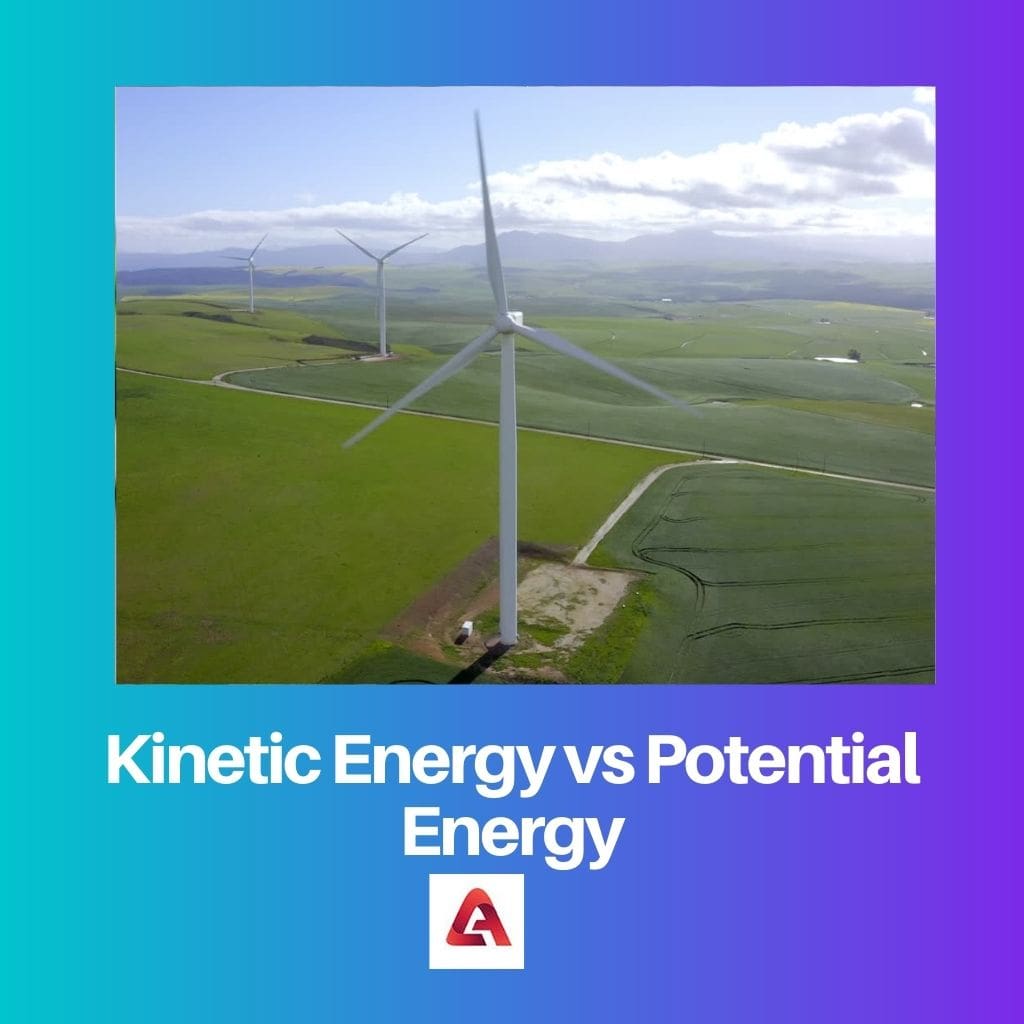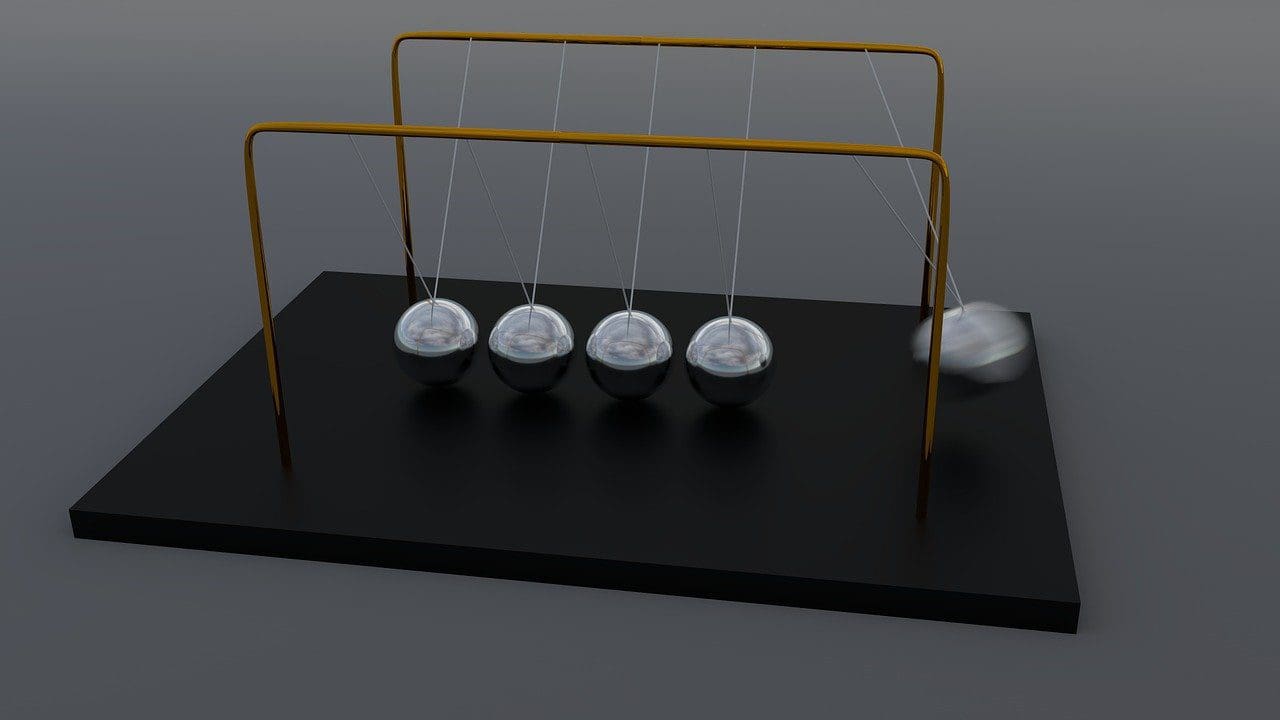Kinetic energy is the energy possessed by an object in motion, determined by its mass and velocity. Potential energy, on the other hand, is stored energy related to an object’s position or state, such as gravitational potential energy or elastic potential energy.
Key Takeaways
- Kinetic energy is the energy of motion.
- Potential energy is the energy that an object has due to its position or state.
- Kinetic energy is dependent on the mass and velocity of an object, while potential energy is dependent on the height or position of an object.
Kinetic Energy vs Potential Energy
The difference between kinetic energy and potential energy is that energies can be transferred between objects with regard to kinetic energy, and the same cannot occur for potential energy.

Supporting with explanation, the critical difference between kinetic energy is that it considers the energy of objects in motion, and potential energy is the energy that an object has due to its positioning relative to other objects in the surroundings.
Comparison Table
| Feature | Kinetic Energy (KE) | Potential Energy (PE) |
|---|---|---|
| Definition | The energy of an object due to its motion. | The stored energy of an object due to its position or state. |
| Cause | Motion of the object | Object’s position or state (e.g., height, stretched spring) |
| Formula | KE = ½ * m * v² (where m is mass and v is velocity) | PE depends on the type: Gravitational PE = m * g * h (where m is mass, g is acceleration due to gravity, and h is height); Elastic PE = ½ * k * x² (where k is spring constant and x is displacement) |
| Units | Joules (J) | Joules (J) |
| Dependence on direction | Depends on direction (positive for forward motion, negative for backward motion) | Independent of direction |
| Transfer | Can be transferred to other objects through collisions or work. | Can be converted to kinetic energy and vice versa. |
| Examples | A moving car, a rolling ball, a swinging pendulum. | A book on a shelf, water behind a dam, a stretched spring. |
What is Kinetic Energy?
Kinetic energy is a fundamental concept in physics, representing the energy an object possesses due to its motion. It is one of the two main types of energy, alongside potential energy. Understanding kinetic energy is crucial for comprehending various phenomena in mechanics, ranging from the motion of particles to the dynamics of celestial bodies.
Definition and Formula
Kinetic energy (K) is quantified by the formula:
KE = ½ * m * v²
Where:
- m is the mass of the object in motion,
- v is the velocity of the object.
Physical Interpretation
- Mass Dependence: Kinetic energy is directly proportional to the mass of the object. Heavier objects moving at the same velocity will possess more kinetic energy compared to lighter objects.
- Velocity Dependence: Kinetic energy is proportional to the square of the velocity. This means that doubling the velocity will quadruple the kinetic energy. Thus, even small changes in velocity can lead to significant alterations in kinetic energy.
- Scalar Quantity: Kinetic energy is a scalar quantity, meaning it has magnitude but no direction. Unlike velocity, which is a vector quantity, kinetic energy simply indicates the amount of energy associated with the motion of an object.
Applications
- Mechanical Engineering: Understanding kinetic energy is vital for designing machinery, analyzing collisions, and determining the performance of moving parts.
- Transportation: In vehicles, kinetic energy is a critical factor in determining stopping distances and crash dynamics. Engineers design safety features based on kinetic energy principles to minimize injury risks.
- Renewable Energy: Kinetic energy is harnessed in technologies like wind turbines and hydroelectric dams to generate electricity. These systems convert the kinetic energy of moving air or water into mechanical energy, which is then transformed into electrical energy.

What is Potential Energy?
Potential energy is a fundamental concept in physics, representing the energy stored within a system due to its position or configuration. It is one of the two main types of energy, alongside kinetic energy. Understanding potential energy is crucial for comprehending various phenomena in mechanics, including gravitational interactions, elastic deformations, and chemical reactions.
Definition and Types
- Gravitational Potential Energy: This type of potential energy arises from the position of an object relative to a gravitational field. The formula for gravitational potential energy near the Earth’s surface is: PE = m * g * h
- Where:
- m is the mass of the object,
- g is the acceleration due to gravity,
- ℎh is the height above a reference point.
- Elastic Potential Energy: Elastic potential energy is stored in objects undergoing deformation, such as a stretched spring or a compressed rubber band. The formula for elastic potential energy is:Uelastic=1/2 *k *x²
- Where:
- k is the spring constant, a measure of the stiffness of the material,
- x is the displacement from the equilibrium position.
- Chemical Potential Energy: Chemical bonds within molecules possess potential energy due to their arrangement. Breaking these bonds releases energy, while forming new bonds stores energy. Examples include the energy stored in food, batteries, and fossil fuels.
Physical Interpretation
- Position Dependence: Potential energy depends on the position or configuration of a system. Objects at different heights in a gravitational field or with varying degrees of deformation in an elastic material will have different potential energies.
- Conservation: In isolated systems where no external forces act, potential energy is conserved. This means that as potential energy decreases (e.g., as an object falls), kinetic energy increases, and vice versa, ensuring the total mechanical energy remains constant.
- Stored Energy: Potential energy represents stored energy that can be released and converted into other forms, such as kinetic energy or heat, under the influence of forces or interactions.
Applications
- Engineering: Potential energy considerations are crucial in designing structures, such as bridges and buildings, to ensure stability and withstand external forces.
- Renewable Energy: Potential energy is harnessed in technologies like hydroelectric dams and pumped-storage systems to store and generate electricity from gravitational potential energy.
- Chemical Reactions: Understanding chemical potential energy is vital in fields like chemistry and biology for predicting reaction outcomes and designing efficient processes.

Main Differences Between Kinetic Energy and Potential Energy
- Nature:
- Kinetic energy is associated with the motion of an object.
- Potential energy is associated with the position or configuration of a system.
- Forms:
- Kinetic energy can exist in various forms, such as translational, rotational, or vibrational motion.
- Potential energy exists in different forms, including gravitational, elastic, and chemical potential energy.
- Measurement:
- Kinetic energy depends on the mass and velocity of the object (K=21mv2).
- Potential energy depends on factors like height, deformation, or chemical bonds within a system (U=mgh, U=21kx2, chemical potential energy).
- Dependency:
- Kinetic energy depends solely on the object’s motion and its velocity.
- Potential energy depends on the position or configuration of the system, regardless of whether the object is in motion.
- Conversion:
- Kinetic energy can be converted into other forms of energy, such as potential energy or heat, during interactions or processes.
- Potential energy can be converted into kinetic energy as objects move in response to forces, such as gravitational attraction or spring compression.
- Conservation:
- Kinetic energy is not typically conserved, as it can be transferred between objects or transformed into other forms of energy.
- Potential energy, in isolated systems, is conserved, with changes in potential energy compensated by changes in kinetic energy, ensuring the total mechanical energy remains constant.




